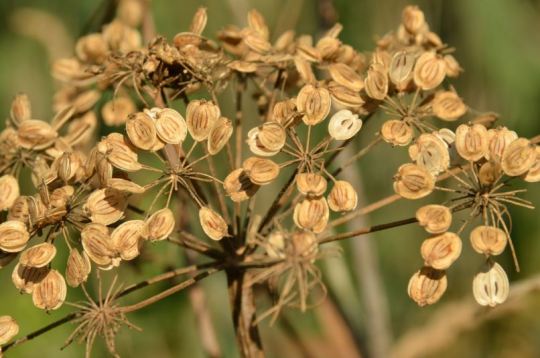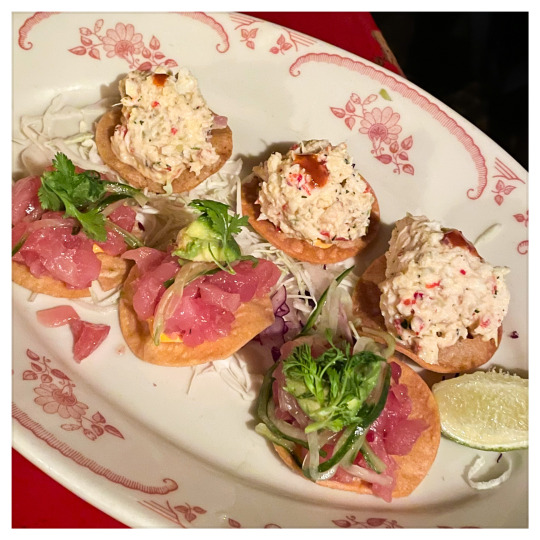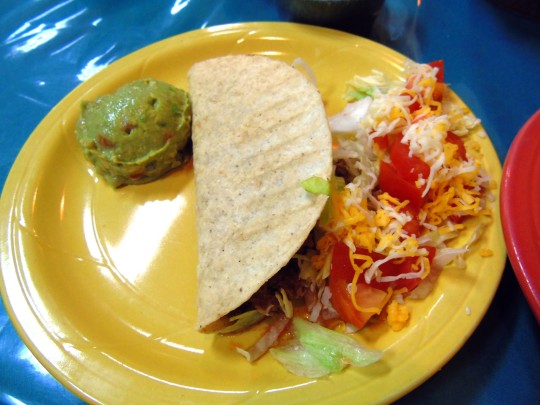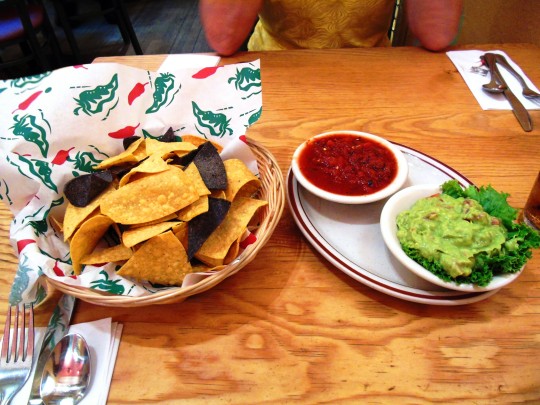#fuerte avocado
Text
What Are The Benefits Of Avocado?: Is Avocado Good For You
What Are The Benefits Of Avocado?: Is Avocado Good For You
What Are The Benefits Of Avocado?: Is Avocado Good For You:- Avocados are one of the trendiest superfoods on the market. But what are the benefits of avocado? This popular fruit is packed with nutrients, vitamins, and minerals, making it a powerhouse for health and wellness. Here we’ll explore what makes avocados so special and uncover the many health benefits of this superfood. So, if you’re…

View On WordPress
#avocado#avocado benefits for skin#avocado fruit#avocado good for you#avocado health benefits#avocado ice cream#avocado oil benefits#avocado seed benefits#avocado toast#avocado topping#benefits of avocado#best avocado toast#david avocado wolfe#fresh avocado#fried avocado#fuerte avocado#hass avocado#persea#ripe avocado#smashed avocado#types of avocados#vitamins in avocado#what are the benefits of avocado?#What Are The Benefits Of Avocado?: Is Avocado Good For You#what are the benefits of drinking boiled avocado leaves?#what are the benefits of eating avocado?#what are the health benefits of avocado?#what does avocado do for you?#what does avocado do to your body?#what happens when you eat avocado everyday?
0 notes
Text
Fuerte avocado season at the CSA!
#we’ve come to the time of year where our orders are basically fuertes and rainbow chard#the most wonderful time of the year#meche chatters
2 notes
·
View notes
Text
Botany, Breeds and Varieties last part

The Hass cultivar in general is very productive, often tending to excessive fruiting, due to the large quantities of flowers it produces, which negatively reflects on the size of the fruit. It also presents the need for pollination by other cultivars; it is recommended to plant the cultivar Ettinger at distances not exceeding 20 m (Guill and Gazit, 1991). One of the the characteristics of the cultivar are the ability to retain the fruit in the plant even after commercial ripening, allowing the harvest for a for a long time (Donadio, 1995).
The fruit weighs 180-300 g, is oval-pyriform, easily peeled, with thick and rough skin, green at first, but it darkens during ripening, reaching a dark purple hue. It has good transport resistance. The
the seed is small, spherical and adherent to the pulp. The production of pulp from this cultivar is about 67% (Campos, 1984) with a fatty acid composition dominated by oleic acid, followed by palmitic, linoleic, palmitoleic and finally, stearic acid.
Fuerte: It is a hybrid between the Guatemalan and Mexican races listening to the foreign market, with an excellent and aromatic butter pulp .
Its production requires places with a milder climate and at high altitudes.
Under normal weather conditions, the avocado tree of the Fuerte cultivar does not require the need for orchards interspersed with other varieties.
Although belonging to the floral group B, under these conditions it is often manages to self-pollinate, even with alternating production, with years of high production and with years of reduced production (Maranca, 1980).
The fruit is piriform in shape and medium to small in size, weighing 150 to 450 grams (Donadio, 1995; Medina et al., 1978). The shell is soft, elastic, green and dull, easily peelable and resistant to transport. The pulp has no fibers, but it is firm and considered low-yielding, being on average of 65% and with an average oil content of 22% (Donadio, 1995),reaching up to 35% (Lucchesi and Montenegro, 1975), having as main fatty acids oleic acid, palmitic acid, linoleic acid, palmitoleic and stearic acid acid, in descending order (Tango et al., 2004).
The seed is small to medium in size, conical and adherent to the pulp, representing an average of 23% of the mass of the fruit. This cultivar sometimes produces small seedless fruits with little or no commercial value (Tango et al., 2004; Donadio, 1995).
This variety is demanding in temperature-environment, especially at the time of flowering and at the beginning of fruiting, when it becomes more sensitive to low temperatures, although the plant is resistant well to the frosts. The harvest is included in the early to medium category, with the time from flowering to ripening lasting from five to seven months and its production is spread over several countries around the world, including Mexico, Australia, South Africa and Brazil (Donadio, 1995).
Nabal: The Nabal avocado is a Guatemalan cultivar, multiplied in California, Florida and Israel since 1927, 1937 and 1934, respectively. Although not so well known as the Hass and Fuerte cultivar, it can be found in the crops of the USA, Israel and Australia-places where it produces at different
times depending on the local climate (Morton, 1987).
Nabal avocado is one of the most frost-sensitive cultivars and, when planted in windy areas, this variety can also be prone to scarring and damage both the plant and the fruits until they are almost ripe (Morton, 1987).
The avocado can remain on the plant for up to eight months after flowering. Nabal avocados have a round shape, with a medium to large size caliber, weighing up to 480 grams. The rind of the fruit is smooth, medium in size thick, dark green, covered with small, easily removable yellow granules.
They are known for having a creamy pulp of an exceptionally delicious quality, greenish-yellow in color and for having a large central cavity in which a usually small seed is found. The Nabal cultivar presents an alternation of harvest, producing up to 31 kg of fruit on average, with about 10-15%
of oil in the pulp (Morton, 1987).
0 notes
Text
5 Easy Steps to Growing Your Own Avocado Tree from a Seed - Ultimate Guide
5 Easy Steps to Growing Your Own Avocado Tree from a Seed - Ultimate Guide. Learn how to easily start an avocado tree from a seed with these simple steps.
Growing Your Own Avocado Tree from a Seed

5 Easy Steps to Growing Your Own Avocado Tree from a Seed - Ultimate Guide. complicated procedures or 5 Easy Steps to Growing Your Own Avocado Tree from a Seed - Ultimate Guide
The Benefits of Growing Your Own Avocado Tree
Growing your own avocado tree can be a rewarding and enjoyable experience for any plant lover. Not only does it provide a sense of accomplishment, but it also allows you to have fresh and delicious avocados whenever you want. However, starting an avocado tree from a seed can seem like a daunting task for beginners. But don't worry, we have put together a comprehensive guide to help you successfully grow your own avocado tree from a seed. In this blog post, we will cover everything from selecting the right seed, preparing the seed for planting, caring for the tree, and even harvesting your avocados. So let's get started!
Choosing the Right Seed
Before you start to grow an avocado tree from a seed, it's important to understand that not all avocado seeds are the same. You want to select a healthy seed that has the best chance of germinating successfully. Here are some tips to help you choose the right avocado seed:
Look for a Fresh Seed
The fresher the seed, the better chance it has of germinating. A seed that has just been removed from a ripe avocado is ideal. Look for seeds that are brown, plump, and without any cracks. Avoid seeds that are shriveled, discolored, or have any type of damage.
Choose a Seed that Sinks
Fill a cup with water and gently place the avocado seed in the water. If the seed sinks to the bottom, it is likely to be a healthy and viable seed. If it floats, it is likely to be an old or damaged seed.
Consider the Variety
There are many varieties of avocados, and each one has its own unique characteristics. It's important to consider which variety you want to grow since different varieties have different flavors and sizes. Some popular varieties for home growing include Hass, Bacon, Fuerte, and Reed.
Preparing the Seed for Planting
Now that you have selected the perfect seed, it's time to prepare it for planting. This step is crucial in ensuring that your avocado seed has the best chance of germinating and growing into a healthy tree. Here's what you need to do:
Remove the Seed from the Fruit
Carefully remove the seed from the avocado fruit. Make sure not to damage the seed as it can affect its ability to germinate.
Clean the Seed
Rinse the seed with water and gently scrub off any remaining flesh. Make sure to be gentle as the seed is still delicate at this stage.
Locate the Top and Bottom of the Seed
The avocado seed is not symmetrical, and one end is slightly broader than the other. The top of the seed is the narrower end, while the bottom is broader. The top is where the seed sprout will emerge, so it's essential to identify it correctly.
Remove the Brown Seed Skin
Before planting, you'll need to remove the brown seed skin. This can be done by gently peeling it off or by soaking the seed in water for a few minutes to loosen the skin.
Planting the Seed
How Deep Should You Plant the Seed?
When it comes to planting an avocado seed, it's crucial to remember that the bottom half of the seed should be submerged in water, while the top half should be exposed. This is because the seed needs moisture and warmth to germinate, but it also needs oxygen from the air. Here's how to get started:
Fill a Container with Water
Take a small jar or container and fill it with water. The water should be about an inch deep.
Insert Two Toothpicks
Carefully insert two toothpicks into the sides of the avocado seed. The toothpicks should be parallel to one another and about halfway up the seed. This will help the seed sit on the mouth of the jar, holding it in place.
Place the Seed on the Jar
Place the seed on the jar with the toothpicks resting on the rim of the jar. Check to make sure the bottom of the seed is submerged in the water while the top remains exposed.
Find a Warm and Sunny Spot
Avocado seeds need warmth and sunlight to germinate, so make sure to place your jar in a warm and sunny spot. A windowsill or near a window is a great spot.
Caring for Your Avocado Tree
Watering
The first few weeks after planting your seed is crucial. You want to make sure that the bottom of the seed is constantly submerged in water. Check the water level daily and add more if needed. Once your seed has sprouted and starts growing roots, you can reduce the water level to about an inch below the bottom of the seed.
Light and Temperature
As mentioned earlier, avocado seeds need warmth and sunlight to germinate. Make sure to keep your seed in a spot where it can get plenty of natural light for at least 6-8 hours a day. The ideal temperature for an avocado seed to germinate is between 60-85°F.
Transplanting
Once your avocado seed has grown into a small tree with a few sets of leaves, it's time to transplant it into a bigger pot. Choose a pot that's at least 10 inches in diameter and has good drainage. Fill the pot with well-draining potting soil and gently transplant your seedling. Make sure not to damage the roots during the transplanting process.
Pruning
Pruning your avocado tree is a crucial step to ensure healthy growth and a bountiful harvest. Pruning helps the tree to stay in balance and allows sunlight and air to reach the inner limbs of the tree.
Growing Your Own Avocado Tree from a Seed
Pruning should be done when the tree is actively growing, typically in the spring. Trim any broken or damaged branches, and remove any limbs that are growing downward or crossing.
Fertilizing
Fertilizing your avocado tree can help it grow stronger and produce more fruits. Using a slow-release fertilizer specially formulated for avocados is recommended. Follow the instructions on the packaging and fertilize your tree every few months, starting in the spring.
Harvesting Your Avocados
The best part of growing your own avocado tree is harvesting your very own avocados. However, it takes a few years for an avocado tree to bear fruit, so patience is key. Here are some tips to help you know when your avocados are ready to be harvested:
Size and Color
Most avocados are ready to be harvested when they are about the size of a fist and have a dark green to black color. However, avocados can vary in size and color depending on the variety, so it's essential to know the specific characteristics of the type of avocado you're growing.
Cutting the Avocados
To harvest your avocados, carefully cut it off the tree using a pruning tool. You can also twist and pull gently to remove it from the tree. Remember to cut the fruit off with about an inch of stem still attached. This will help the fruit last longer.
Ripening
Depending on the variety, avocados can take anywhere from a few days to a week to ripen. You can leave them on the counter at room temperature to ripen or place them in a paper bag to speed up the process.
Frequently Asked Questions (FAQs)
Can I Grow an Avocado Tree from a Store-Bought Avocado?
Absolutely! Store-bought avocados are just as good as any other avocado seed for growing an avocado tree. Just make sure to follow the same steps for preparing the seed for planting.
How Long Does It Take for an Avocado Tree to Bear Fruit?
It can take anywhere from 3-15 years for an avocado tree to produce fruit. The time can vary depending on the variety of avocado tree and how well it is cared for.
Can I Grow an Avocado Tree Indoors?
Yes, you can definitely grow an avocado tree indoors. Just make sure it gets plenty of natural light, and the room temperature is kept above 60°F.
Conclusion

Learn how to easily start an avocado tree from a seed with these simple steps. No need for complicated procedures or specialized knowledge. Follow our guide to successfully grow your own avocado tree and enjoy homegrown avocados in no time! Avocado Tree Seed 5 Easy Steps to Growing Your Own Avocado Tree from a Seed - Ultimate Guide
How long does it take an avocado tree to produce fruit?
Typically, an avocado tree will start producing fruit in 3 to 4 years after being planted from a seed. However, depending on the growing conditions and the variety of the avocado tree, it can take up to 15 years for the tree to produce fruits.
When is the best time to plant an avocado seed?
The best time to plant an avocado seed is during the spring or summer season. During these seasons, the temperature is warm and the days are long, providing the perfect growing conditions for the avocado seed. Additionally, make sure to choose a well-drained location with plenty of sunlight for optimal growth.
Do I need to remove the avocado seed husk before planting?
No, you do not need to remove the avocado seed husk before planting. In fact, the husk serves as a protective layer and will eventually fall off as the avocado seed begins to germinate. Removing the husk can damage the seed and hinder its growth.
How often should I water my avocado seedling?
It is important to keep the soil moist but not overly wet when it comes to watering your avocado seedling. Water the plant every 1-2 days and make sure the top inch of soil is dry before watering again. Overwatering can cause root rot and stunt the growth of the seedling.
Can I grow an avocado tree indoors?
Yes, you can grow an avocado tree indoors, but it requires a lot of light and space. Avocado trees are tropical plants that need at least 6 hours of sunlight a day. If you are growing the tree in a pot, make sure to choose a pot with good drainage and enough room for the roots to grow. Additionally, consider using a grow light to supplement the natural light if needed.
0 notes
Text
Diverse Features that Avocado Plant Wholesalers Provide

The widely adored, creamy, and healthy fruit known as the avocado has experienced a recent rise in popularity. Avocados are a common ingredient in contemporary diets, whether they are spread on toast, added to salads, or blended into a decadent smoothie. A network of distributors for avocado plants is responsible for bridging the gap between merchants and farms and getting these edible beauties to market.
Continue reading to know the advantages avocado plant wholesalers provide and why they're important participants in the avocado market.
Having Year-round Access to a Supply
Being able to offer avocados all year long is one of the main benefits of avocado plant wholesalers. Although avocado plants have unique fruiting seasons, distributors purchase avocados from diverse areas and nations to provide a consistent supply. Due to their accessibility, avocados may be enjoyed year-round by customers and enterprises, which increases their appeal and adaptability in the kitchen.
Quality Control
The quality of their products is the most important thing for avocado plant wholesalers. They establish strict quality standards and work closely with avocado producers to make sure that only the best avocados are sold. This dedication to quality extends to packaging and delivery, guarding against damage and guaranteeing that avocados reach their destination in top shape.
Affordable Prices
Wholesalers may get better pricing by purchasing avocados in large quantities from producers. Retailers and customers both profit from this competitive pricing. Retailers may increase sales by offering avocados at competitive costs, and consumers can benefit from the fruit's health advantages without breaking their budgets.
Specialty and Varieties of Avocados
In addition to the well-known Hass avocado, avocado plant suppliers sometimes provide less well-known kinds including Fuerte, Bacon, and Pinkerton. Because of the diversity, both customers and retailers can experience various flavors and culinary demands. Through wholesalers, specialty avocado cultivars are also more easily accessible, fulfilling consumer demand for uncommon and exotic variations.
Distributive Networks
Avocados can be easily delivered to several areas and marketplaces because of the distribution networks that wholesalers have created. This broad distribution network guarantees that avocados are available in both urban and rural locations, encouraging a more diverse avocado consumption pattern. As an outcome, people from all walks of life can benefit from the many health advantages avocados provide.
Assistance to Local Farmers
Avocado plant wholesalers frequently work with nearby farmers, fostering the expansion of the agricultural sector. Wholesalers help farmers' livelihoods and promote sustainable growing methods by offering a steady market for avocados. The economic growth of the places where avocados are grown depends on this assistance.
Less Food Wastage
Wholesalers are essential in lowering food waste. They put in place effective distribution and inventory management systems to make sure avocados are bought and eaten before they ripen too much. Additionally, to cut down on supply chain waste, distributors may send slightly imperfect or extra avocados to processing plants.
Knowledge and Market Perspectives
Wholesalers of avocado plants are informed about avocado farming and consumer tastes. Growers and merchants may benefit from their insightful advice, which will enable them to choose the best planting, harvesting, and marketing techniques. This knowledge supports the avocado industry's long-term expansion.
In conclusion, distributors of avocado plants play a crucial role in the production of avocados. They are vital because they can offer year-round access to avocados of the highest caliber at reasonable prices, with a wide variety, and with assistance from nearby producers. Additionally, their networks of distribution and dedication to minimizing food waste are advantageous to both clients and customers.
So, keep in mind that avocado plant wholesalers are essential in delivering that delectable.
0 notes
Text
California Avocados: Green Gold from the Golden State
California avocados are often hailed as some of the best in the world. With their rich, creamy texture and vibrant flavor, they have earned a special place on plates across the globe. In this article, we will explore the unique characteristics and significance of California avocados while ensuring the content remains original and free from duplication.
The California Advantage: California's diverse microclimates, including the Mediterranean-like conditions in regions like Southern California, provide an ideal environment for avocado cultivation. This allows California to produce avocados year-round, ensuring a steady supply of high-quality fruit. In fact, California is the leading avocado-producing state in the United States.
Varieties of California Avocados: Hass avocados, the most popular variety globally, are synonymous with California avocado. They have a distinctive pebbly skin that turns from green to purplish-black when ripe. But California's avocado groves also cultivate other varieties, such as Fuerte, Bacon, Zutano, and Pinkerton, each with its unique flavor profile and texture.
Nutrient-Rich Powerhouses: California avocados are packed with essential nutrients. They are an excellent source of healthy monounsaturated fats, fiber, potassium, vitamin K, vitamin E, and folate. These nutrients contribute to heart health, improved digestion, and overall well-being.
Versatile Culinary Delights: California avocados are celebrated for their versatility in the kitchen. They can be mashed into guacamole, sliced onto sandwiches, diced into salads, or spread on toast. Their rich and creamy texture pairs well with a wide range of dishes, from savory to sweet.
Sustainability and Quality: California avocado growers are committed to sustainable farming practices that minimize the environmental impact. They prioritize water conservation, responsible pesticide use, and soil health. This commitment ensures not only the longevity of the avocado industry but also the high quality and taste of California avocados.
Buying and Storing California Avocados: To select the best California avocados, look for fruit that yields slightly to gentle pressure without being too soft. Avoid avocados with visible bruises or blemishes. Once you have ripe avocados, store them in the refrigerator to prolong their freshness.
In conclusion, California avocados are more than just a tasty fruit; they are a symbol of the state's agricultural prowess and dedication to quality. With their delicious taste, nutritional benefits, and sustainable cultivation practices, California avocados continue to be a prized ingredient in kitchens worldwide. https://avocadomonthly.com/
0 notes
Text
My first week at NHS and no surprise as Tanya warned it’s unorganised
Not a proper induction although I would benefit
Tanya should’ve did a plan three years ago which goes to show the volume of work she has
I have been dumped with many tasks and i’m used to taking my time but to expect to churn is turning me off but i’m trying
Dami is a real one she’s like Joy told her I have no tasks and i’m essentially picking up their ish
It was a struggle Friday with a finnicky buffer
And this pressure to be on all the time
But reluctantly I’ll do some (unpaid) work today to earn my keep as my bro would say...
I hosted Elvine
It was great I was proud to show her a place
and after work I hurriedly went into Master Chef mode
getting my ingredients out
Making my signature Greek-style potatoes
Then some left over chilli with shredded chicken
some beyond meat burgers
and my first time making a spectacular avocado salad
i indulged in some wine while my french friend did not
it was nice having Elvine and she seemed more chatty talking about how God made a way for her in Shoreditch to be close to her friends which is ever so important
she wanted seconds of my avocado
it felt satisfying hearing that after years of self doubt and hatred
slowly she is emerging
elle est gentille mais elle est fuerte aussi
she doesn’t hestiate to make her opinion known
i still get terrible tremors (internal) i’m not sure if it’s lack of sleep
I’m keen to see my neurologist and get the answers I need
Yolanda...she is leaving...leaving...
I wished and I can still be more open I offered to help pack her items
I’m excited to have coffee with her
As for the double room, yes I want my own bathroom, I really do but I feel strongly that I should live below my means which means abstaining
It doesn’t make sense working a contract job, no supplement income, loose ends in Canada
I’m managing (for now) sharing the washroom with
it would be an almost 2,000 increase until November
also mi bandito favorito
0 notes
Text
Avocado Oil Market - Forecast 2022 - 2027
Avocado Oil Market Overview
Avocado Oil Market size is estimated to reach $7,851 million by 2026, growing at a CAGR of 5.7% over 2021-2026. Avocado oil is derived from the Persea Americana fruit and is used as an edible oil for cooking, cosmetics, and lubrication due to its moisturizing and regenerating qualities. Avocados, often known as butter peas or vegetable butter, are a Central American fruit. Avocado oil has a high potassium content, as well as vitamins A, D, and E, antioxidants, anti-inflammatory agent, fatty acid, and monounsaturated fats. Furthermore, it is used as a flavor enhancer and a cooking oil supplement in a variety of recipes. Additional health consciousness among individuals, awareness of the nutritional benefits of avocado oil, changing customer preferences, and increased avocado oil applications in pharmaceuticals and the food industry are the factors anticipated to spur the global market forward during the forecast period of 2021-2026.

Report Coverage
The report: “Avocado Oil Market Forecast (2021-2026)”, by Industry ARC, covers an in-depth analysis of the following segments of the Avocado Oil Market. By Product Type: Virgin Oil, Extra Virgin Oil, Refined Oil, Blend and Others.
By Avocado Type: Hass, Fuerte, Zutano, Bacon, Lamb Hass, Gwen and Others.
By Application: Food and Beverages, Pharmaceuticals and Nutraceuticals, Dairy Products, Sweet and Savoury Snacks and Others.
By Distribution Channel: Hypermarkets/Supermarkets, Specialty Stores, Convenience Stores, online Retail and Others.
By Geography: North America (U.S., Canada, Mexico), Europe (U.K, Germany, Italy, France, Spain, Russia, Rest of Europe), Asia Pacific (China, Australia, Japan, South Korea, India, Rest of Asia Pacific), South America (Brazil, Argentina, Others) and Rest of the World (Middle East, Africa).
Inquiry Before Buying
Key Takeaways
In 2020, North America dominated the Avocado Oil Market.
The rise in the number of chronic illnesses and a rise in consumer health consciousness are both growing, are anticipated to help in the global expansion of the Avocado Oil Market.
Detailed analysis of the Strength, Weakness, and Opportunities of the prominent manufacturers operating in the market will be provided in the Avocado Oil Market report.
However, one of the key challenges limiting the growth of the Avocado Oil Market is the presence of alternatives to avocado oil which are becoming more common, and avocado oil is becoming more expensive.
Avocado Oil Segment Analysis – By Product Type
The Avocado Oil Market based on product can be further segmented into Virgin Oil, Extra Virgin Oil, Refined Oil, Blend and Others. Cancer of disease segment is the major segment generating revenue in 2020. Extra virgin avocado oil is getting prominence in growing countries including the United States, Canada, and Germany. This is owing to a growth in the popularity of avocado oil as a result of the rise in illnesses such as diabetes, high blood pressure, and myocardial infarction. Also, there is an increase in health consciousness and consumption of healthy and nutritious cooking oil among health-conscious customers are driving the worldwide extra virgin avocado oil market. Furthermore, this segment is estimated to register the fastest CAGR of 6.24% for the period 2021-2026. Additionally, a surge in the use of extra virgin avocado oil in the cosmetics industry adds substantially to the growth of the worldwide extra virgin avocado oil market. On the other hand, an increase in demand for fashionable cosmetics such as nutricosmetics, which use extra virgin avocado oil as an ingredient, is expected to create lucrative market development prospects.
Request Sample
Avocado Oil Segment Analysis – By Distribution Channel
The Avocado Oil Market based on drug type can be further segmented into Hypermarkets/Supermarkets, Specialty Stores, Convenience Stores, Online Retail and Others. The supermarkets/hypermarkets segment registers for the highest avocado oil market share in 2020. This is mainly owing to facts as these stores are incorporated with numerous alternatives and the availability of varieties of avocado oil from various brands. Furthermore, sales of avocado oils by hypermarkets is believed to rise effectively as consumers prefer these retail channels for shopping owing to the in-store promotions by retailers and price comparisons is anticipated to further expand the consumption rate over the forecast period 2021-2026.
On the contrary, the online retail segment is forecasted to register the fastest CAGR of 7.7% over 2021-2026. This is mainly owing to the fact that there is an increase in the number of online retail channels, especially in developing economies, which has augmented the penetration of modern grocery retail chains during the COVID-19, further contributing to the sales of avocado oils in the up-coming years.
Avocado Oil Segment Analysis – By Geography
North America dominated the Avocado Oil Market with a major share of 45.2% in the year 2020. This is mainly due to the increase in health challenges such as heart disease and chronic illnesses, which are caused by a high consumption of high-fat oils, which drives the demand for avocado oil. Coronary Artery Disease (CAD) is the most prevalent kind of heart disease in the United States, and it can lead to a heart attack. Apart from this, the presence of well-known avocado oil producers such as Bella Vado, Inc., Grupo Industrial Batellero S.A. de C.V., Chosen Foods LLC, and Sesajal S.A. de C.V. is boosting the industry's expansion in the region. During the projected period, the avocado oil business in the area is predicted to develop owing to the increased consumption of processed food and beverage goods.
However, Europe is estimated to outpace all the regions by clocking the highest CAGR of 6.5% during the forecast period 2021-2026 owing to the fact that EU countries such as UK, Germany, France, Italy, and Spain are showing a shift in the dietary habits by the consumers. This can be further attributed to the fact that the region in the study period has shown an up-surge in the demand for the consumption of processed and flavored food itineraries. Apart from this, an increase in awareness regarding the diseases among parents to the rise in awareness regarding health benefits of avocado oil among consumers is also increasing the growth of the Avocado Oil Market in this region.
Schedule Call
Avocado Oil Market Drivers
Increase In Health-Conscious People, Along With Need For Plant-Based Cosmetics, Is Projected To Augment Development
Avocado Oil Market is predicted to grow resulting in an increase in health consciousness among individuals as a result of the rising incidence of chronic disorders. Avocado Oil industry is predicted to be aided by an increase in the demand for plant-based cosmetics. Obesity and overweight issues are the leading causes of death, according to the World Health Organization. Individuals are increasing their diet of nutritious vegetables and fruits, such as avocados, to battle these health concerns, which is projected to boost demand for avocado oil. Avocados lower cholesterol and triglycerides. Besides, the market is anticipated to be driven by strong growth for avocado oil in personal care products attributable to its advantageous monounsaturated fatty acids like oleic acid and its moisturizing properties. The personal care products market in India is anticipated to reach US$ 10 billion by 2021, with a CAGR of 6%, according to the India Brand Equity Foundation (IBEF). Cosmetic product use is on the rise as people become more conscious of the importance of looking nice. As a result, the demand for avocado oil in the region rises.
Avocado Oil Market Challenges
High Product Costs And Its Subsequent Alternatives Presence Might Result In A Loss Of Output
One of the key concerns that is predicted to stifle the Avocado Oil Market's growth is the rise of alternatives to avocado oil. Chia seed oil, olive oil, hemp oil, and other alternative oils made from healthy sources are competitors for avocado oil. These oils have their own set of advantages. This is likely to provide a challenge to the avocado oil industry throughout the forecast period 2021-2026 as customers have a variety of other goods to choose from. The lower shelf-life of avocado fruits, which deteriorate and rot in a short amount of time, is another hindrance to the Avocado Oil Market's expansion. As a result, avocado oil producers have begun to relocate their oil extraction operations closer to avocado-producing regions.
Buy Now
Avocado Oil Market Landscape
Product launches, mergers and acquisitions, joint ventures and geographical expansions are key strategies adopted by players in the Avocado Oil market. In 2020, Avocado Oil market share is fragmented by the top ten players present in the market.
The Avocado Oil market top 10 companies are:
Spectrum Organic Products LLC
Bella Vado Inc.
La Tourangelle
The Village Press
Madana Inc
Olivado USA
Crofts Ltd.
CalPure Foods Inc.
Clibaria International
Choosen Foods
For more Food and Beverage Market reports, please click here
#Avocado Oil Market Size#Avocado Oil Market Share#Avocado Oil Market Analysis#Avocado Oil Market Trends#Avocado Oil Market Growth#Avocado Oil Market Research#Avocado Oil Market Forecast
0 notes
Photo





This is my favorite restaurant in New York and possibly my favorite restaurant anywhere. The vibe, the food, the drinks . . . the whole experience is fantastic. I recommend it to everyone.
Queso Fundido with Chorizo [Melted Chihuahua Cheese served with Salsa Verde and Corn & Flour Tortillas], Tuna Tostadas [Yellowtail, Chipotle Aioli, Avocado, Citrus Soy Drizzle, Pickled Cucumber, Citrus], Crab Tostadas [Dungeness Crab, Celery, Mint, Red Onion, Cilantro Habanero Aioli], and Camarones BLT Taquitos [Shrimp, Garlic Butter, Bacon, Pico de Gallo, Lettuce & Habanero Mayo]
Blanco, Reposado, and Anejo Tequila Flight and La Piña Fuerte [Mezcal, Fresh Pineapple, Rosemary]
When: Dinner
Where: @esquinanyc — New York, NY
Who: Lynn
Amount Spent: $212.24
Amount Spent YTD: $10,375.89
#myterriblediet
(at La Esquina)
https://www.instagram.com/p/CjpzBG7uVe_/?igshid=NGJjMDIxMWI=
0 notes
Photo

Enjoyed vegan fare with friends at @cafegratitude in #venice where every dish is an affirmation: I Am Insightful (Asian spring rolls with smoked tofu, carrots, wakame, cabbage, shiitakes); I Am Sharing (nachos with black beans and cashew cheese); I Am Exquisite (coconut calamari); I Am Humble (Indian curry lentil bowl, yams, spinach); Yo Soy Fuerte (mushroom carnitas wrap); I Am Elated (jackfruit tings enchiladas); I am Awakening (key lime pie made with avocado custard) #food #realfood #lafoodie #parttimevegetarian #occasionalvegan and mostly #glutenfree (at Café Gratitude) https://www.instagram.com/p/Ciol_ZIuiBI/?igshid=NGJjMDIxMWI=
1 note
·
View note
Photo










National Avocado Day
Today we celebrate avocados! A fruit that grows on trees, avocados have a tough skin with a greenish or yellowish flesh inside, as well as a large seed. They can range in size from that of a hen’s egg to up to about four pounds, depending on their variety. Some major varieties are Hass, Fuerte, Bacon, Zutano, Rincon, Mexican, Guatemalan, Booth 8, Booth 7, Lula, and Waldin. They are native to Mexico and to the area south of there down to the Andes Mountains.
The Aztecs are known to have eaten avocados. For a long period of time, avocados were only eaten in Central and South America and in the Caribbean, where they gained the name “alligator pear.” In 1833, horticulturist Henry Perrine became the first to plant avocados in Florida. They were first planted in California in the 1880s. By the turn of the century, orchards were established, and avocados first gained commercial importance.
Avocado dishes began appearing in Mexican recipe books and restaurants in the 1920s. During this time, avocados really weren’t popular in the United States except for in California, Hawaii, and Florida. More Americans began embracing avocados when they became a popular salad item in the 1950s. Guacamole also gained in popularity, largely on account of the El Torito restaurant chain. In the twenty-first century, the popularity of avocados has continued to increase. According to the Hass Avocado Board, avocado consumption doubled between 2005 and 2015 and quadrupled between 2000 and 2015. Today, the biggest growers of avocados are Mexico, Chile, the Dominican Republic, Indonesia, and Columbia. They are also grown in Florida, California, Hawaii, Australia, Brazil, South Africa, Israel, and some Pacific Islands.
Avocados are a good or high source of vitamins C, E, K, B1, B2, A, and potassium, and they are a rich source for omega-3 fatty acids. They are high in monounsaturated fats that are healthy for the heart. One of these fats, oleic acid, is also healthy for the skin. Not only can avocados benefit the skin by being ingested, but they can be used topically. The Aztecs used them in skin masks, and by the early twentieth century, they were being used in facial cleansers, creams, and lotions. This is still the case today.
Avocados are used in savory and sweet dishes all around the world and are almost always eaten raw. One of the most common uses for avocados is guacamole. It is made by mashing them and is used as a dip for tortilla chips. Avocados are spread on toast and tortillas, eaten in salads, and even enjoyed as desserts. In some countries, they are used in milkshakes or other drinks, and sometimes in ice cream. Avocado oil is used in salads and dips as well.
National Avocado Day was founded by Model Meals, a meal delivery service that focuses on sustainable agriculture and healthy eating. They work with local organic farmers and growers to create menus. Avocados are often used, and they decided to create a holiday because they liked them so much. They chose July 31 as the holiday’s date because it is during peak avocado season in California.
How to Observe
Celebrate the day by eating avocados! There are many varieties you could try and many different ways you could eat them. You could have some guacamole and chips or spread avocado on toast. You could also use avocados to make a salad or a dessert. Some restaurants give away free guacamole today, so keep an eye out for that. Another idea could be to use oils and lotions made with avocados.
Source
#Avocado Ranch Burger#Texas Avocado Burger#Fried Chicken Sandwich#salsa#sour cream#Guacamole#fajitas#I don't like avocados that much#I can eat avocados but#guacamole is okay though#tortilla chips#Elk Santa Fe Burger#South of the Border-Burger#fries#travel#vacation#tourism#National Avocado Day#NationalAvocadoDay#31 July#USA#Canada#Sweden#original photography#Avocado Salmon Tartare
1 note
·
View note
Text
Botany, Breeds and Varieties part 2

It is possible to differentiate the breeds by morphology, phenology and sensory parameters. The Mexican breed originated in the high regions of Mexico and the Cordillera, which makes it more resistant to cold, tolerating even temperatures close to -6°C. The fruit is usually small, with a short peduncle and a thin, smooth skin. The seed is relatively large and the oil content of the pulp is high in the fruit (Koller, 1992), which matures six to eight months after flowering, in the warmer months of the year, between December and February (Campos, 1984). The genotypes of this breed can also be recognized by the characteristic smell of anise when crushing of leaves and flowers.
The Guatemalan breed comes from the high regions of Central America and with regard to cold tolerance, it is considered intermediate, being more tolerant than the Antilhana and less tolerant compared to the Mexicana.
The ripening of the fruits takes longer compared to Mexicana, which happens 10-15 months after flowering and in the months before the hottest months time of year, from May to November. Fruits have a middle large-caliber, a long peduncle, with a thick skin, 1.5 to 3 mm thick, hard and with a rough surface. The stone occupies the entire cavity of the fruit. The oil content of the pulp is considered to be average with about 12%. Another feature of the breed is the deep darkness green leaves, stronger than the specimens of the West Indian race. Examples of representatives of this breed in Brazil are the cultivars Prince, Wagner and Linda (Campos, 1985; Koller, 1992).
The Antilhana breed corresponds to the popularly known avocados known as "common" or "butter", originating from the lower regions of the center and South America. Its fruits have short peduncles, smooth and leathery skin, about 1.5 mm thick and low-oil pulp. The seeds are relatively large in size and are usually loose in the cavity. The fruits of the cultivars varieties of this breed usually ripen in the summer. Among the three races, this one is the most sensitive to cold, damaging itself with lower temperatures - 2ºC (Campos, 1984). This breed includes Pollock, Simmonds and Princesa cultivars (Canto, 1978; Maranca, 1980; Campos, 1985).
Despite the division into three races, this classification has not absolute value, because there are a large number of natural hybrids among breeds with high potential for economic exploitation. Most of the the cultivated varieties come from these hybrids. So, one more more the simplified classification was carried out by Maranca (1980), who essentially divides the varieties of avocados into two main categories: those of tropical climate, which are usually varieties of the Antilhana breed, from the Guatemalan race, and/or hybrids of the two; and those of subtropical climate that are Mexican or Guatemalan breeds, or even hybrids between the two.
With regard to varieties, Ramos and Sampaio (2008) affirm that it is it is impossible to compile a complete list with all existing varieties due to to the thousands of genetic lines resulting from the multiplication on thousands of years; however, the adoption of the selection of local hybrids
have been used as a tool to obtain new cultivars, which in turn fully respond the requirements of consumers and, as a rule, are selected for commercial reasons plantations. With the wide availability of the avocado's genetic material, many cultivars have been created; however, despite the large number of the cultivars, three of them are more widely cultivated and distributed in the world: 'Hass', 'Fuerte' and 'Nabal' (Pérez -vvarez et al., 2015). Hass: Similar to Fuerte, this cultivar is a Guatemalan-Mexican hybrid, which appeared in California / USA in the 1920s and became the most
cultivar grown and produced all over the world. In relation to the climate conditions, it is a cultivar sensitive to low humidity, especially where there are hot and dry winds, which dry out the flowers and young leaves, making they fall and are also more sensitive to cold than Fuerte .
0 notes
Photo

Después de enfrentar muchas adversidades generadas por la lluvia durante la primera parte del Rally del Bajío, el equipo Qualitas Subaru Rally Team, conformado por Pancho Name y Armando Zapata, superaron con su equipo técnico serias adversidades para salir adelante y conquistar el tercer lugar que les permite mantenerse en la parte alta del Campeonato Nación de Rallies en el Grupo Uno. Bajo una fuerte lluvia, la primera parte del Rally que se llevó a cabo el viernes 29 por la noche, el Subaru WRX de Name y Zapata absorbió agua por el filtro en un encharcamiento que provoco que el motor se parara, lo que les obligó a seguir en Modo Súper Rally y continuaran con las respectivas penalizaciones por no cumplir con algunos tramos. Posteriormente el eficiente trabajo del equipo técnico de Subaru les permito desarmar parte del motor, sacar el agua, cambiar el aceite y correr con condiciones normales el sábado, con lo cual pudieron ser muy rápidos y ganar diversos tramos absolutos para conquistar de esta manera el tercer lugar y continuar peleando fuertemente el campeonato. La tercera edición del Rally del Bajío se corrió por carreteras de Guanajuato durante 93 kilómetros divididos en 10 etapas, del viernes 29 al sábado 30 de julio. “Este resultado, para todo lo que nos sucedió, es bastante bueno ya que nos mantiene en la lucha por el campeonato”, aseguró Pancho Name. “Nos sentimos contentos con el desempeño de nuestro Subaru al final del rally y ahora a prepararnos para el día 26 de agosto que tenemos el Rally de Oaxaca, al que tenemos que llegar más fuertes todavía por otro gran resultado, así como correr el Coahuila Mil”, dijo. El piloto de Escudería Telmex Telcel también agradeció el apoyo a sus patrocinadores Quálitas, Subaru, Motul, Kärcher, K1speed, Hard Rock Hoteles, Lock, GoPro, JA artículos, View Sports, Can-Am, Extreme Toys, Naim Carbon, Effekten, Escudería Telmex Telcel, TV4, Secretaría de Turismo de Guanajuato, Quadra Lifestyle, Avocado Cuin, Bloc E Climbing y Andrés Simg. https://www.instagram.com/p/CgrwDgHOX5Z/?igshid=NGJjMDIxMWI=
0 notes
Text
Explore the wonders of Avocado here
Explore the wonders of Avocado here
The scientific name of avocado is Persea gratissima gaertn. Other synonyms are alligator pear, Zuttano and fuerte. Its tree is normally evergreen and of height of 16 metres.
It contains 74.2% or less of water. It is very low compared to other fruits. It also contains fats which are of high biological value and unsaturated. These fats contain no cholesterol. Avocado has protein content of…

View On WordPress
0 notes
Text
Exploring the World of Avocado Varieties: Beyond the Hass
Avocado aficionados are well-acquainted with the Hass avocado, but there's a world of avocado varieties out there, each with its unique flavor, texture, and characteristics. In this article, we will explore the diverse variety of avocado, from the creamy and familiar to the exotic and lesser-known.
1. Hass Avocado: As the most widely recognized avocado variety, the Hass is known for its pebbly, dark green-to-purple skin and creamy texture. It's prized for its rich, nutty flavor and accounts for the majority of avocado consumption worldwide.
2. Fuerte Avocado: Often considered the "alligator pear" due to its smooth, thin skin, the Fuerte avocado boasts a creamy texture and a slightly milder taste than the Hass. It's a popular choice for salads and sandwiches.
3. Bacon Avocado: Named after its farmer, James Bacon, this avocado variety features smooth, medium-thick skin and a mild, buttery flavor. Its flesh is creamy and pale green, making it a versatile option for various culinary creations.
4. Zutano Avocado: Zutano avocados have distinctive, pear-shaped fruit with glossy, yellow-green skin. They have a lighter, slightly fibrous texture and a more subtle, tangy taste compared to other varieties.
5. Pinkerton Avocado: Pinkerton avocados are elongated with pebbly, dark-green skin. They offer a creamy, pale-green flesh with a slightly nuttier flavor than the Hass. They are often preferred for their lower oil content.
6. Gwen Avocado: Gwen avocados are a hybrid of the Hass and the Bacon varieties. They have a creamy texture, a rich, nutty flavor, and a distinctive oval shape with pebbly skin.
7. Reed Avocado: Known for its round, softball-like appearance, the Reed avocado boasts a smooth, green skin and a creamy, almost buttery texture. It has a unique, slightly sweet flavor.
8. Lamb Hass Avocado: A variation of the Hass, Lamb Hass avocados are known for their small to medium size, pebbly skin, and creamy texture. They offer the classic Hass flavor but are often easier to handle due to their size.
9. Pinkerton Avocado: Pinkerton avocados are elongated with pebbly, dark-green skin. They offer a creamy, pale-green flesh with a slightly nuttier flavor than the Hass. They are often preferred for their lower oil content.
10. Bacon Avocado: Named after its farmer, James Bacon, this avocado variety features smooth, medium-thick skin and a mild, buttery flavor. Its flesh is creamy and pale green, making it a versatile option for various culinary creations.
11. Zutano Avocado: Zutano avocados have distinctive, pear-shaped fruit with glossy, yellow-green skin. They have a lighter, slightly fibrous texture and a more subtle, tangy taste compared to other varieties.
In conclusion, exploring the wide California avocado available allows you to discover new tastes and textures, enhancing your culinary adventures. Whether you prefer the classic Hass or want to experiment with other options, the world of avocados is ripe for exploration and delicious discoveries. https://avocadomonthly.com/varieties/
0 notes
Link
The avocado oil market is expected to witness market growth at a rate of 7.5% in the forecast period of 2021 to 2028.
0 notes